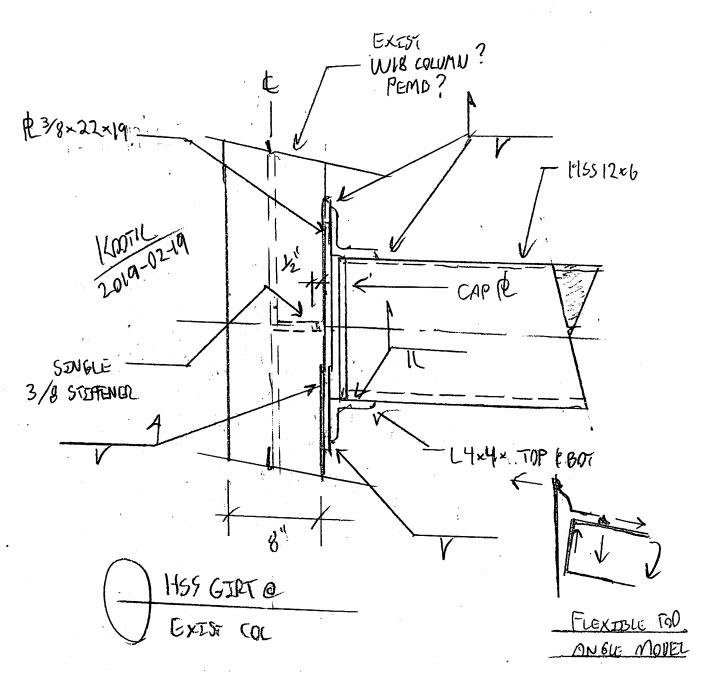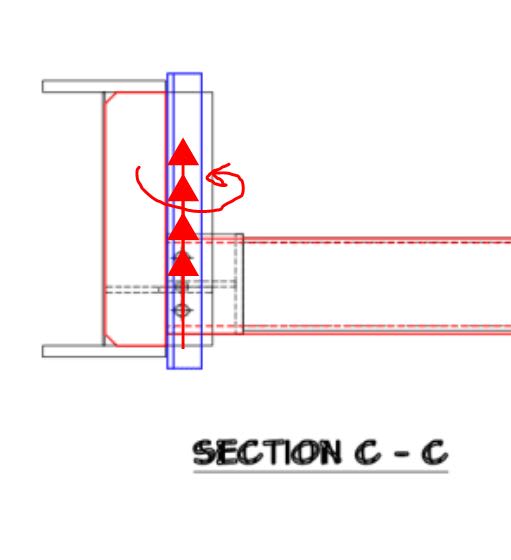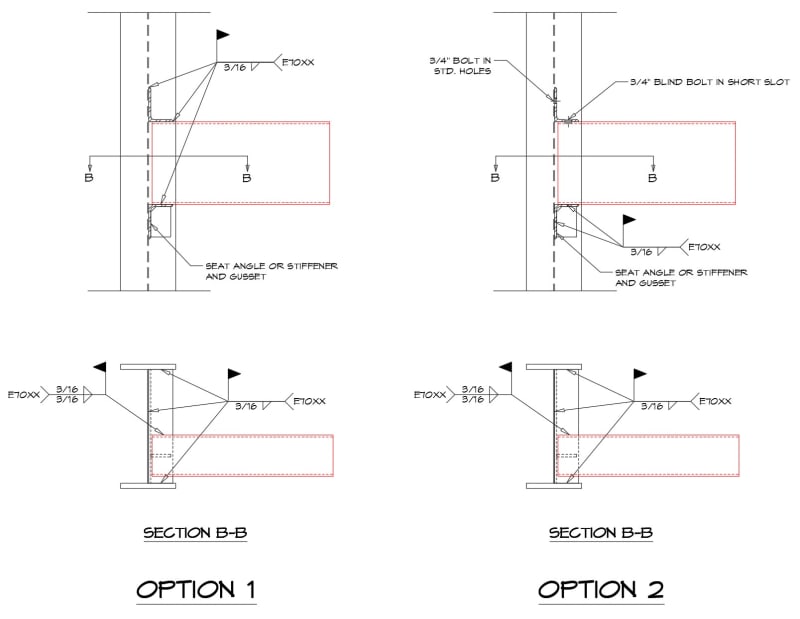waytsh
Structural
- Jun 10, 2004
- 373
I know this topic has been covered in a number of threads but my condition is a little different from those I have found. Let me give a quick break down of my situation.
1) I have an HSS spandreal that will connect to the web of a WF column.
2) The connection to the column must be designed to resist both vertical and horizontal shear as well as torsion.
3) The connection cannot induce moment into the weak axis of the column.
4) Forces are not very large, 2.2 kips vertical, 2.0 kips horizontal, and 16.3 kip-in of torsion.
5) The design of the HSS section is controlled by deflection since it is over a glass wall and is the reason the size is so large and the forces are so small.
I am considering the connection shown below but it is very complicated and is a two step process. I welcome any better solutions. I am trying to avoid a bolted end-plate due to its tendency to put moment into the weak axis of the column and the fact that the length of the HSS will need to be perfect.
Thank you
[URL unfurl="true"]https://res.cloudinary.com/engineering-com/image/upload/v1582057747/tips/HSS_Connection_Concept_k2ilua.pdf[/url]
1) I have an HSS spandreal that will connect to the web of a WF column.
2) The connection to the column must be designed to resist both vertical and horizontal shear as well as torsion.
3) The connection cannot induce moment into the weak axis of the column.
4) Forces are not very large, 2.2 kips vertical, 2.0 kips horizontal, and 16.3 kip-in of torsion.
5) The design of the HSS section is controlled by deflection since it is over a glass wall and is the reason the size is so large and the forces are so small.
I am considering the connection shown below but it is very complicated and is a two step process. I welcome any better solutions. I am trying to avoid a bolted end-plate due to its tendency to put moment into the weak axis of the column and the fact that the length of the HSS will need to be perfect.
Thank you
[URL unfurl="true"]https://res.cloudinary.com/engineering-com/image/upload/v1582057747/tips/HSS_Connection_Concept_k2ilua.pdf[/url]





